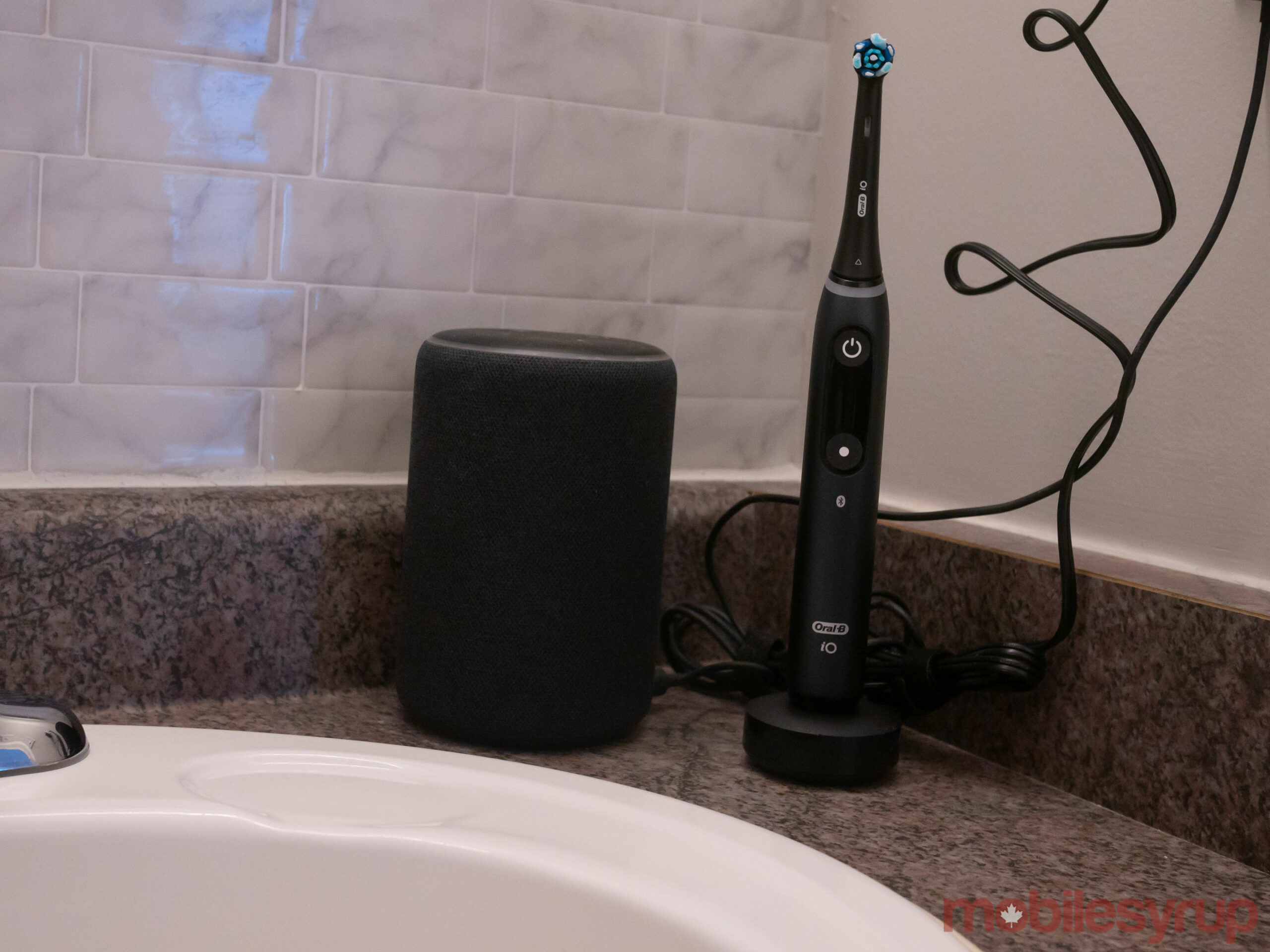It’s easy to say “Break up Big Tech companies!” Depending how politics unfold, the thing might become
possible,
but figuring out the details will be hard. I spent the last
sixteen years of my life working for Big Tech and have educated opinions on the subject. Today: Why and how we should break up
Google.

Where’s the money?
Google’s
published financials are annoyingly opaque. They break out a few segments but (unlike
Amazon) only by revenue, there’s nothing about profitability. Still, the distribution is interesting.
I collated the percentages back to Q1 2018:
|
Ads on Google |
Ads off Google |
Ads on YouTube |
Cloud |
Other |
| 2018 Q1 |
70.97% |
14.84% |
? |
? |
14.19% |
| 2018 Q2 |
71.69% |
14.77% |
? |
? |
13.54% |
| 2018 Q3 |
71.73% |
14.58% |
? |
? |
13.69% |
| 2018 Q4 |
69.05% |
14.32% |
? |
? |
16.62% |
| 2019 Q1 |
70.99% |
13.81% |
? |
? |
14.92% |
| 2019 Q2 |
70.36% |
13.66% |
? |
? |
15.98% |
| 2019 Q3 |
70.97% |
13.15% |
? |
? |
15.88% |
| 2019 Q4 |
59.39% |
13.10% |
10.26% |
5.68% |
11.57% |
| 2020 Q1 |
59.76% |
12.68% |
9.76% |
6.83% |
10.73% |
| 2020 Q2 |
56.05% |
12.37% |
10.00% |
7.89% |
13.42% |
Note that they started breaking out YouTube and Cloud last year; it looks like Cloud was previously hidden in
“Other” and YouTube in “Ads on Google”. I wonder what else is hidden in there?
Why break it up?
There are specific problems; I list a few below. But here’s the big one: For many years, the astonishing torrent of money
thrown off by Google’s Web-search monopoly has fueled invasions of multiple other segments, enabling Google to bat aside rivals who
might have brought better experiences to billions of lives.
-
Google Apps and Google Maps are both huge presences in the tech economy.
Are they paying for themselves, or are they
using search advertising revenue as rocket fuel? Nobody outside Google knows.
In particular, I’m curious about Gmail, which had
1.5B users in 2018. Some of those people see ads, but
plenty don’t. So what’s going on there? It can’t be that
cheap to run. Where’s the money?!
-
The maps business, with its reviews and ads, has a built-in monopolization risk that
I wrote about in 2017. It needs to be peeled off
so we can think about it.
We definitely want reviews and ads on maps (“Where’s the nearest walk-in clinic open on Sunday with
friendly staff?”), but the potential for destructive
corruption is crazy high.
Used to be, there were multiple competing map producers and some of them were governments.
The notion of mapping being a public utility (Perhaps multinational? What a concept!) with competing ad vendors running on it
doesn’t sound crazy to me.
The online advertising business has become a Facebook/Google duopoly which is destroying ad-supported publishing and
thus intellectually impoverishing the whole population; not to mention putting a lot of fine journalists out of work.
The best explanation I’ve ever read of how that works is
Data
Lords: The Real Story of Big Data, Facebook and the Future of News by Josh Marshall.
The world needs Google Cloud to be viable because it needs more than two public-cloud providers. It’s empirically
possible for such a business to make lots of money; AWS does. GCloud needs to be ripped away from its
corporate parent,
just as AWS does, but for different reasons.
I note the pointed absence of Android in any of the financials. It’s deeply weird that the world’s most popular
operating system has costs and revenues that nobody actually knows. Of course,
the real reason Android exists is that Google needs
mobile advertising not to become an Apple monopoly.
YouTube has become the visual voice of several generations and is too important to leave hidden inside an
opaque conglomerate. Is it a money-spinner or strictly a traffic play? Nobody knows. What we do know is that people who try to
make a living as YouTubers sure do complain a lot about arbitrary, ham-handed changes of monetization and content policy.
Simultaneously, Google’s efforts to avoid promoting creeps and malefactors aren’t working very well.
What to do?
First, spin Advertising off into its own company and then enact aggressive privacy-protection and anti-tracking
law. Start by doing away with 100% of third-party cookies, no exceptions. It’d probably be OK to leave the off-site
advertising in that company.
But YouTube definitely has to be its own thing; it’s got no real synergy that I can detect with any other Google
property.
I’m not even sure Android is a business. Its direct cost is a few buildings full of engineers. Its revenue is
(indirectly) mobile ads, plus Play Store commissions, plus Pixel
sales plus, uh, well nobody knows what kinds of backroom arrangements are in place with Samsung et al. Absent the mobile ads, I
doubt it’s much of a money-maker. Maybe turn it into a foundation funded by a small levy on everyone who ships an Android phone…
Other ideas?
What to do with Maps isn’t obvious to me. It’s probably a big-money business (but we
don’t know). In combination with the reviews capability it should be a great advertising platform, but the opportunities for
corruption are so huge I’m not sure any private business could be trusted to manage them. First step: Force Google to disclose
the financials.
I think Google Cloud could probably make a go of it as an indie, if only as a vendor of infrastructure to all the other
ex-Google properties.
And I think the product is good, although they’re running third in the public-cloud race.
To increase Google Cloud’s chances, throw in the Apps business; Microsoft classifies their equivalent as Cloud and I don’t think
that’s crazy. My Microsoft-leaning friends scoff at the G Apps, but they’re just wrong; with competent administration the apps
offer a slick, fast, high-productivity office-automation experience.
Finally, as a standalone company, we could hope they’d break Google’s habit of suddenly killing products
heavily depended-on by customers. You just can’t do that in the Enterprise space.
The politics
So there should be at least four Google-successor organizations, each with a chance for major success.
I think this would be pretty easy to sell to the public. To start with, what’s left of the world’s press would
cheerlead, eager to get out from under the thumb of the Google/Facebook ad cartel.
Legions of YouTubers would march in support as well.
Financially, I think Google’s whole is worth less than the sum of its parts. So a breakup might be a win for shareholders.
This is a reasonable assumption if only because the
fountain of money thrown off by Web-search advertising leaves a lot of room for laziness and mistakes in other sectors of the
business.
Also, it’s quite likely the ex-Googles could come out ahead on the leadership front. Larry, Sergey, and the first wave of
people they hired made brilliant moves in building Web search and then the advertising business. But the
leadership seems to have lost some of that golden touch; fresh blood might really help.
When?
The best time would have been sometime around 2015. The second best…



























 Both experiences taught me evaluating novel/complex/evolving systems against known and set criteria risks missing the essence of them. When you look through cookie-cutters you can only see cookies and totally miss the great chef or new gastronomic approach growing in front of your eyes.
Both experiences taught me evaluating novel/complex/evolving systems against known and set criteria risks missing the essence of them. When you look through cookie-cutters you can only see cookies and totally miss the great chef or new gastronomic approach growing in front of your eyes.

